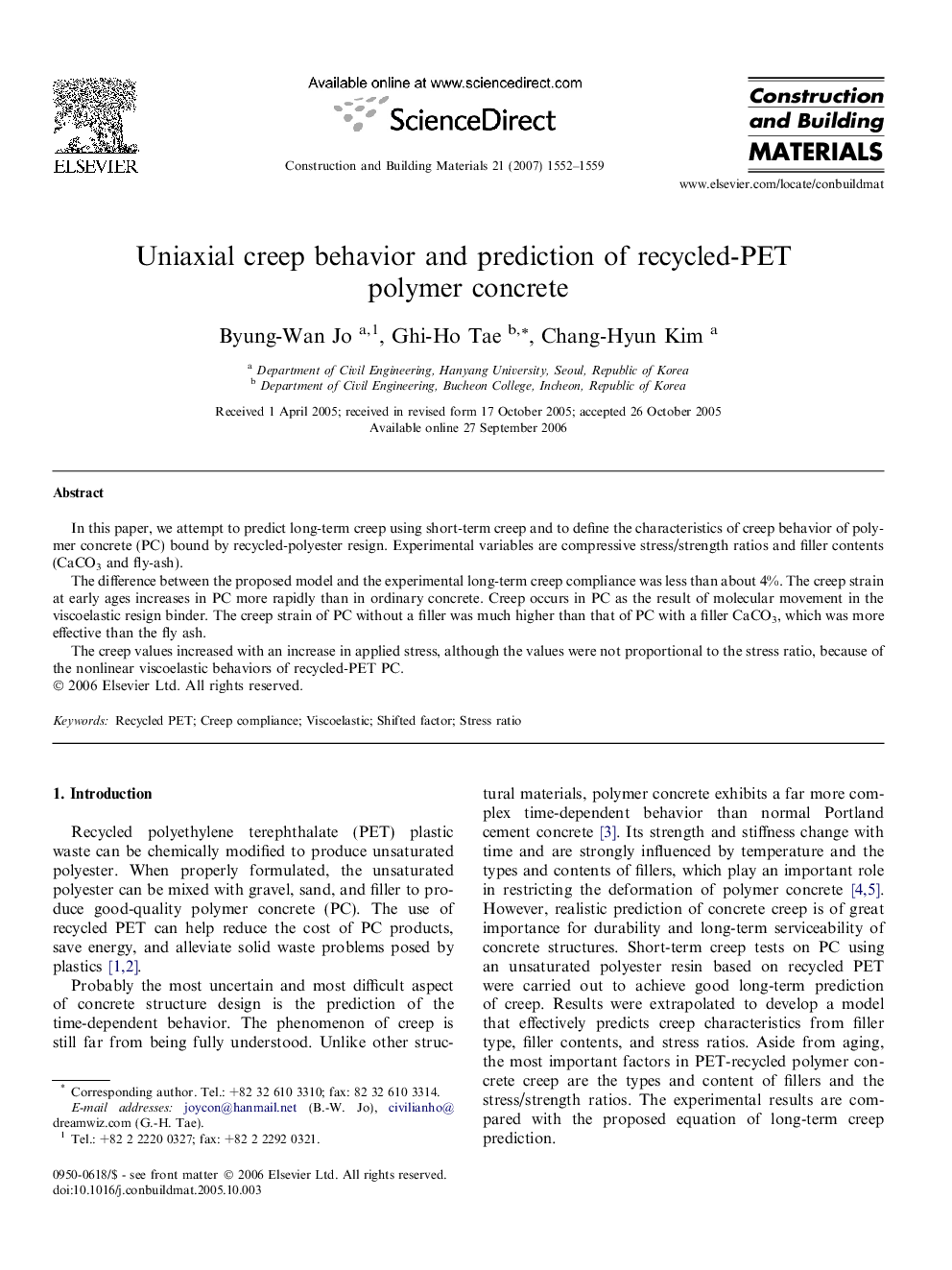| Article ID | Journal | Published Year | Pages | File Type |
|---|---|---|---|---|
| 261411 | Construction and Building Materials | 2007 | 8 Pages |
In this paper, we attempt to predict long-term creep using short-term creep and to define the characteristics of creep behavior of polymer concrete (PC) bound by recycled-polyester resign. Experimental variables are compressive stress/strength ratios and filler contents (CaCO3 and fly-ash).The difference between the proposed model and the experimental long-term creep compliance was less than about 4%. The creep strain at early ages increases in PC more rapidly than in ordinary concrete. Creep occurs in PC as the result of molecular movement in the viscoelastic resign binder. The creep strain of PC without a filler was much higher than that of PC with a filler CaCO3, which was more effective than the fly ash.The creep values increased with an increase in applied stress, although the values were not proportional to the stress ratio, because of the nonlinear viscoelastic behaviors of recycled-PET PC.
